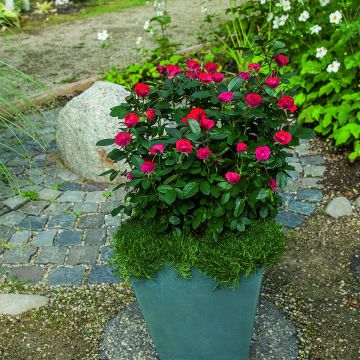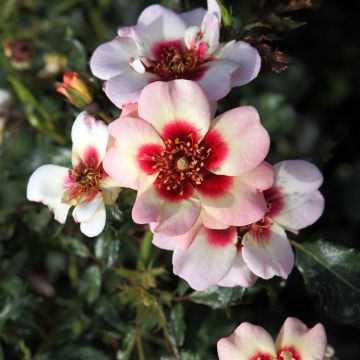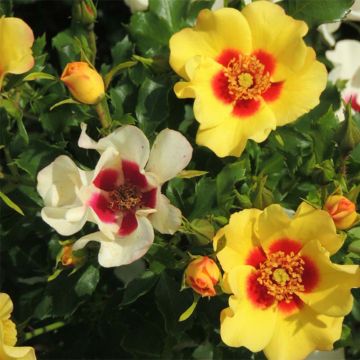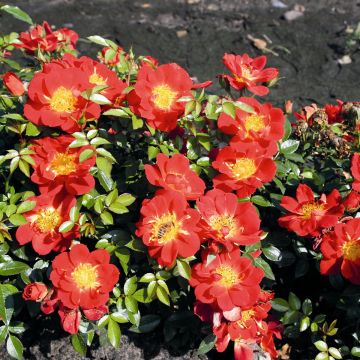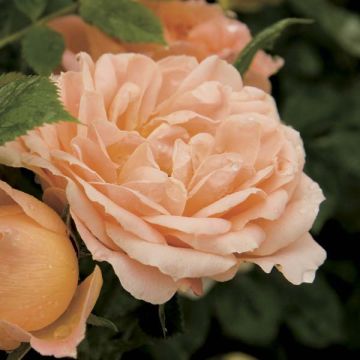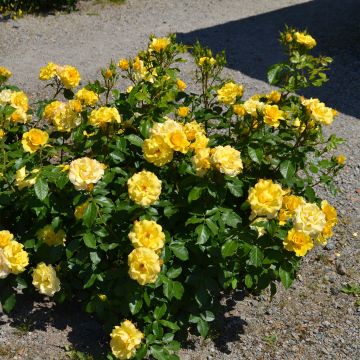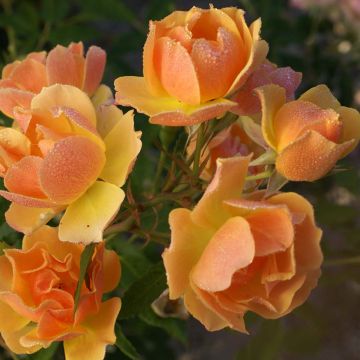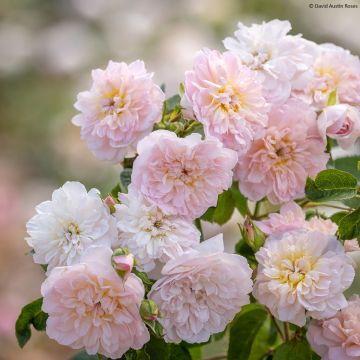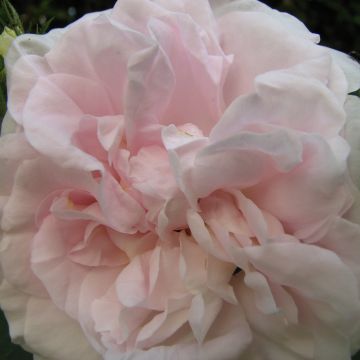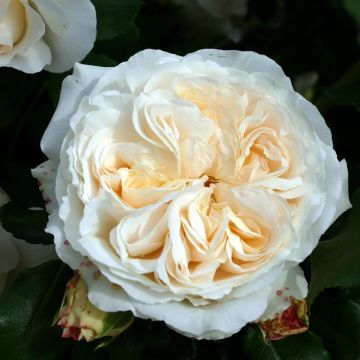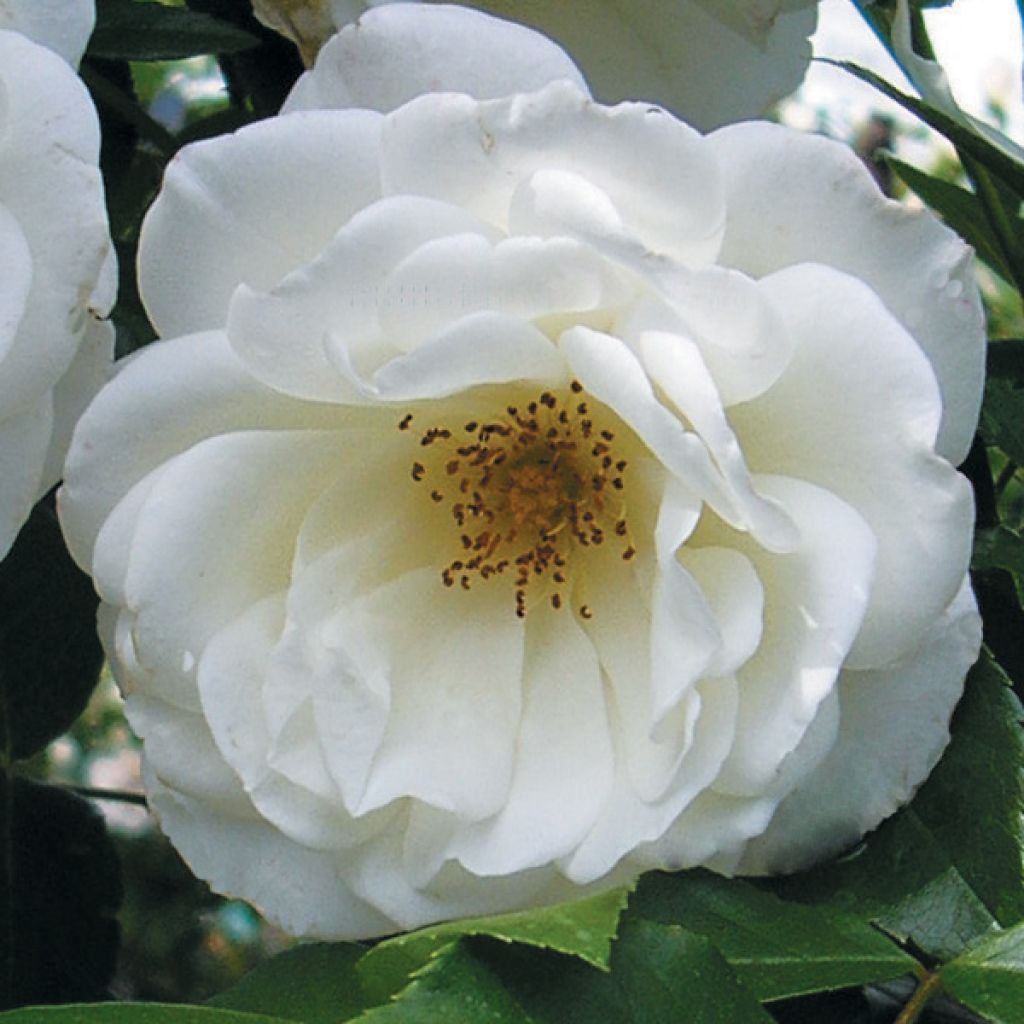

Rosa x floribunda 'Princesse de Galles' - Hybrid Tea Rose
Rosa x floribunda 'Princesse de Galles' - Hybrid Tea Rose
Rosa x floribunda Princesse de Galles (HARDINKUM)
Hardinkum
This item cannot be shipped to the selected country
Delivery charge from €5.90
Delivery charge from €5.90
Delivery to Corse prohibited
More information
Schedule delivery date,
and select date in basket
This plant carries a 24 months recovery warranty
More information
We guarantee the quality of our plants for a full growing cycle, and will replace at our expense any plant that fails to recover under normal climatic and planting conditions.
From €5.90 for pickup delivery and €6.90 for home delivery
Express home delivery from €8.90.
From €5.90 for pickup delivery and €6.90 for home delivery
Express home delivery from €8.90.
Delivery to Corse prohibited: UE law prohibits the import of this plant from mainland France to Corse as part of the fight against Xylella fastidiosa. Please accept our sincere apologies.
More information

Does this plant fit my garden?
Set up your Plantfit profile →
Description
The 'Princess of Wales Rose' or 'hardinkum', halfway between a polyantha and a bush, is an exquisite and floriferous cluster-flowered rose. It first charms with the purity of its white roses that do not change colour at the end of flowering and how they are grouped in dense bouquets throughout the season. Then, by its beautiful, flexible, and lush vegetation. A superb rose, with vigorous and healthy growth, constantly flowering, with a light, very soft fragrance. Its modest size makes it a prime choice for borders, flower beds and large pots on patios and balconies.
The Rosa floribunda 'Princess of Wales' is a creation by Harkness (U.K.) dating from 1997. It was awarded the Gold Medal of the plant world in 2001, the A.G.M. of the Royal Horticultural Society (R.H.S.). The plant forms in a few years a small ramified bush with a spreading, slightly trailing, very natural habit, measuring about 65 cm (26in) in height and 80 cm (32in) to 1 m (3ft) in width. It shows young shoots tinged with brown, and its thorny stems bear foliage cut into dark green leaflets, very resistant to diseases. This deciduous foliage falls in autumn. The flowering repeats from June to October. The wide corollas of 5-6 cm (2in) are semi-double, gathered in generous bouquets. When they bloom, they have a turbinate shape, and then they open almost flat around a small yellow heart. The flowering of this rose is very lightly scented, and it withstands rain well.
The floribunda roses allow for beautiful small hedges planted mixed at the edge of the terrace or in flower beds with small-sized bushes. Combine them with ground-cover roses, abelias, nandinas, or copter. They are good companions for foxgloves and tall baby's breath. The modest size, generosity, and resistance of 'Princess of Wales' make it an interesting variety for all gardens, even small ones and container gardening. Its uses are varied, according to the desires of each gardener: in a rose bed, alongside white varieties (Marie Pavie, Swanny), pink or mauve ones (Blue Boy, Rhapsody in Blue). Like all roses, it is stunning mixed with easy-care perennials such as hardy geraniums, catmints, or asters. Its bouquets of roses are charming in floral arrangements or centrepieces, with double clematis flowers, for example.
Report an error about the product description
Plant habit
Flowering
Foliage
Botanical data
Rosa
x floribunda
Princesse de Galles (HARDINKUM)
Rosaceae
Hardinkum
Cultivar or hybrid
Rosa canina Laxa (Wrapped bare root)
Other Dwarf and mini Roses
Planting and care
Rose bushes thrive in a sunny location that receives at least 4 to 5 hours of sunlight per day. However, they should be sheltered from the scorching midday rays and strong winds. Loose, permeable, and humus-rich soil is ideal for rose bushes. They prefer slightly acidic soil but can adjust to any garden if the soil is well-prepared and fertile enough.
If you plan to plant your rose bush in a pot, make sure to work the soil to a depth of 25 cm (10in), crumble it well, and place a bottom amendment like blood, fish and bone in the planting hole. Then, position your plant, removed from its pot, by covering the top of the root ball with 3 cm (1in) of soil, backfill, and water generously to eliminate air pockets. During dry weather, it is necessary to water regularly for a few weeks to help the roots establish.
Don't forget to provide your rose bush with special rose fertiliser that stimulates flowering in plants.
Roses may develop unsightly spots at the end of summer, but this is a natural occurrence and doesn't harm the rose's growth.
Planting period
Intended location
Care
-
, onOrder confirmed
Reply from on Promesse de fleurs
Roses by purpose
Haven't found what you were looking for?
Hardiness is the lowest winter temperature a plant can endure without suffering serious damage or even dying. However, hardiness is affected by location (a sheltered area, such as a patio), protection (winter cover) and soil type (hardiness is improved by well-drained soil).

Photo Sharing Terms & Conditions
In order to encourage gardeners to interact and share their experiences, Promesse de fleurs offers various media enabling content to be uploaded onto its Site - in particular via the ‘Photo sharing’ module.
The User agrees to refrain from:
- Posting any content that is illegal, prejudicial, insulting, racist, inciteful to hatred, revisionist, contrary to public decency, that infringes on privacy or on the privacy rights of third parties, in particular the publicity rights of persons and goods, intellectual property rights, or the right to privacy.
- Submitting content on behalf of a third party;
- Impersonate the identity of a third party and/or publish any personal information about a third party;
In general, the User undertakes to refrain from any unethical behaviour.
All Content (in particular text, comments, files, images, photos, videos, creative works, etc.), which may be subject to property or intellectual property rights, image or other private rights, shall remain the property of the User, subject to the limited rights granted by the terms of the licence granted by Promesse de fleurs as stated below. Users are at liberty to publish or not to publish such Content on the Site, notably via the ‘Photo Sharing’ facility, and accept that this Content shall be made public and freely accessible, notably on the Internet.
Users further acknowledge, undertake to have ,and guarantee that they hold all necessary rights and permissions to publish such material on the Site, in particular with regard to the legislation in force pertaining to any privacy, property, intellectual property, image, or contractual rights, or rights of any other nature. By publishing such Content on the Site, Users acknowledge accepting full liability as publishers of the Content within the meaning of the law, and grant Promesse de fleurs, free of charge, an inclusive, worldwide licence for the said Content for the entire duration of its publication, including all reproduction, representation, up/downloading, displaying, performing, transmission, and storage rights.
Users also grant permission for their name to be linked to the Content and accept that this link may not always be made available.
By engaging in posting material, Users consent to their Content becoming automatically accessible on the Internet, in particular on other sites and/or blogs and/or web pages of the Promesse de fleurs site, including in particular social pages and the Promesse de fleurs catalogue.
Users may secure the removal of entrusted content free of charge by issuing a simple request via our contact form.
The flowering period indicated on our website applies to countries and regions located in USDA zone 8 (France, the United Kingdom, Ireland, the Netherlands, etc.)
It will vary according to where you live:
- In zones 9 to 10 (Italy, Spain, Greece, etc.), flowering will occur about 2 to 4 weeks earlier.
- In zones 6 to 7 (Germany, Poland, Slovenia, and lower mountainous regions), flowering will be delayed by 2 to 3 weeks.
- In zone 5 (Central Europe, Scandinavia), blooming will be delayed by 3 to 5 weeks.
In temperate climates, pruning of spring-flowering shrubs (forsythia, spireas, etc.) should be done just after flowering.
Pruning of summer-flowering shrubs (Indian Lilac, Perovskia, etc.) can be done in winter or spring.
In cold regions as well as with frost-sensitive plants, avoid pruning too early when severe frosts may still occur.
The planting period indicated on our website applies to countries and regions located in USDA zone 8 (France, United Kingdom, Ireland, Netherlands).
It will vary according to where you live:
- In Mediterranean zones (Marseille, Madrid, Milan, etc.), autumn and winter are the best planting periods.
- In continental zones (Strasbourg, Munich, Vienna, etc.), delay planting by 2 to 3 weeks in spring and bring it forward by 2 to 4 weeks in autumn.
- In mountainous regions (the Alps, Pyrenees, Carpathians, etc.), it is best to plant in late spring (May-June) or late summer (August-September).
The harvesting period indicated on our website applies to countries and regions in USDA zone 8 (France, England, Ireland, the Netherlands).
In colder areas (Scandinavia, Poland, Austria...) fruit and vegetable harvests are likely to be delayed by 3-4 weeks.
In warmer areas (Italy, Spain, Greece, etc.), harvesting will probably take place earlier, depending on weather conditions.
The sowing periods indicated on our website apply to countries and regions within USDA Zone 8 (France, UK, Ireland, Netherlands).
In colder areas (Scandinavia, Poland, Austria...), delay any outdoor sowing by 3-4 weeks, or sow under glass.
In warmer climes (Italy, Spain, Greece, etc.), bring outdoor sowing forward by a few weeks.



































